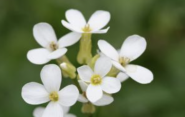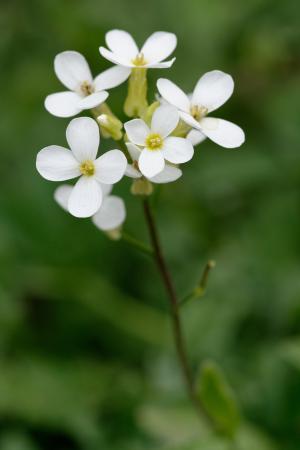Wildflower Cells Reveal Mystery of Leaf's Structure

In plants, the cells that form the internal structure of leaves start out as tightly compacted spheres in the early stages of leaf development. As the leaf develops and expands, these cells take on new shapes and loosen up. Yet the leaf’s microstructure remains robust and intact.
 A team of researchers—including a mechanical engineer, plant biologist, and applied physicist—has figured out how this happens. Doing so not only answers questions that have long baffled the plant world, but could lead to the manufacturing of energy-producing photosynthetic materials. The results of their work appear in the Journal of the Royal Society Interface.
A team of researchers—including a mechanical engineer, plant biologist, and applied physicist—has figured out how this happens. Doing so not only answers questions that have long baffled the plant world, but could lead to the manufacturing of energy-producing photosynthetic materials. The results of their work appear in the Journal of the Royal Society Interface.
The middle layer of plant leaves is known as the spongy mesophyll, which is a porous network of cells where photosynthesis happens. In this process, carbon dioxide (CO2) comes up through the bottom of the leaf, sunlight comes in through the top, and then the two interact within the middle layer of cells. In a leaf’s early stages, the cells in this layer are nearly spherical and tightly packed together. However, if the cells stay this way, the light and the carbon dioxide have no room to interact. So the cells loosen up to make room to allow photosynthesis to happen. But in doing so, why doesn’t the leaf lose its structure and break apart?
“The spongy mesophyll is able to develop into a very porous material, yet retain the properties of a solid,” said Corey O’Hern, professor of mechanical engineering & materials science. “That's the paradox, that the leaf needs to create this labyrinthian structure of air space to allow diffusion of CO2—but the leaf still has to remain mechanically stable.”
To understand this counterintuitive process, O’Hern and the other researchers used images made with confocal microscopy of the cells in different phases of the leaf’s development.
“We created a computational model to describe the shapes of individual cells and how much they stick to each other,” O’Hern said. “Then we modeled the development of the spongy mesophyll by pulling on the tissue on all sides.”

These studies included measuring the shapes of all cells and the porosity of the mesophyll (that is, how much of the material is made up of cells and how much is made up of air). The researchers charted the course of the cells’ development from early to late stages of development and observed how the cells morph from tightly packed spheres to elongated and multi-lobed shapes.
They found that, rather than causing the leaf structure to break down, the cells spreading out maintained the leaf’s structure. “What's happening is that the cells in the spongy mesophyll are still pushing outward, while the epidermal tissue in the leaf is keeping it inside,” O’Hern said.
The specific plant they looked at is the thale cress, a wildflower known to scientists as Arabidosis thaliana. It’s considered the fruit fly of plants in that it’s particularly useful for experiments. It germinates very quickly, and the genes of the plant are well-known.
For future studies, the researchers plan to apply their computational model to other plant species to see if the model can expain the wide diversity of spongy mesophyll structure. Further, they want to apply what they've learned to creating artificial plant tissue.
“If we can understand how plants are so efficient at photosynthesis, and can understand the self-assembly of leaf mesophyll, maybe we can create similar photosynthetic materials in the lab.”

